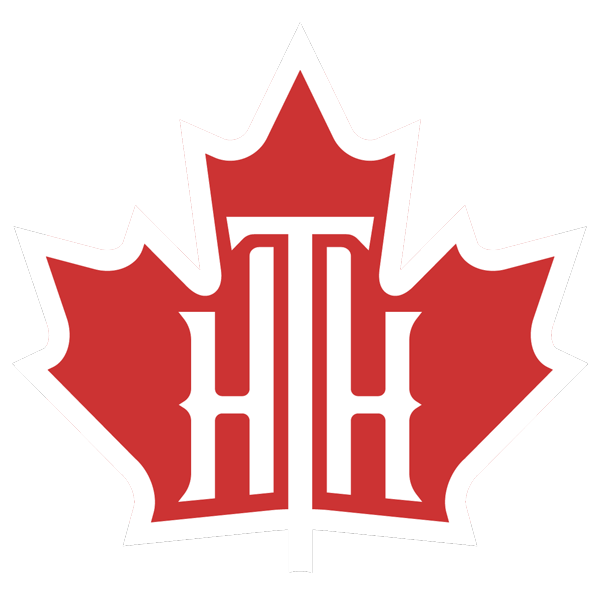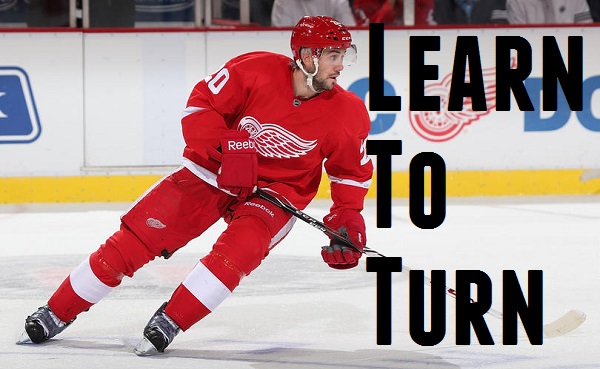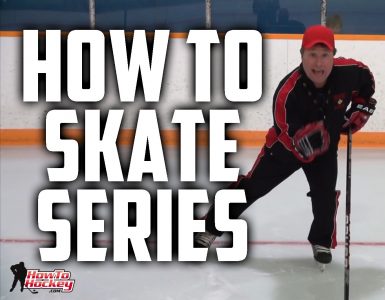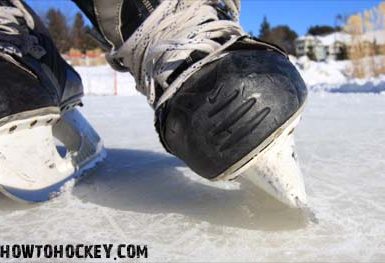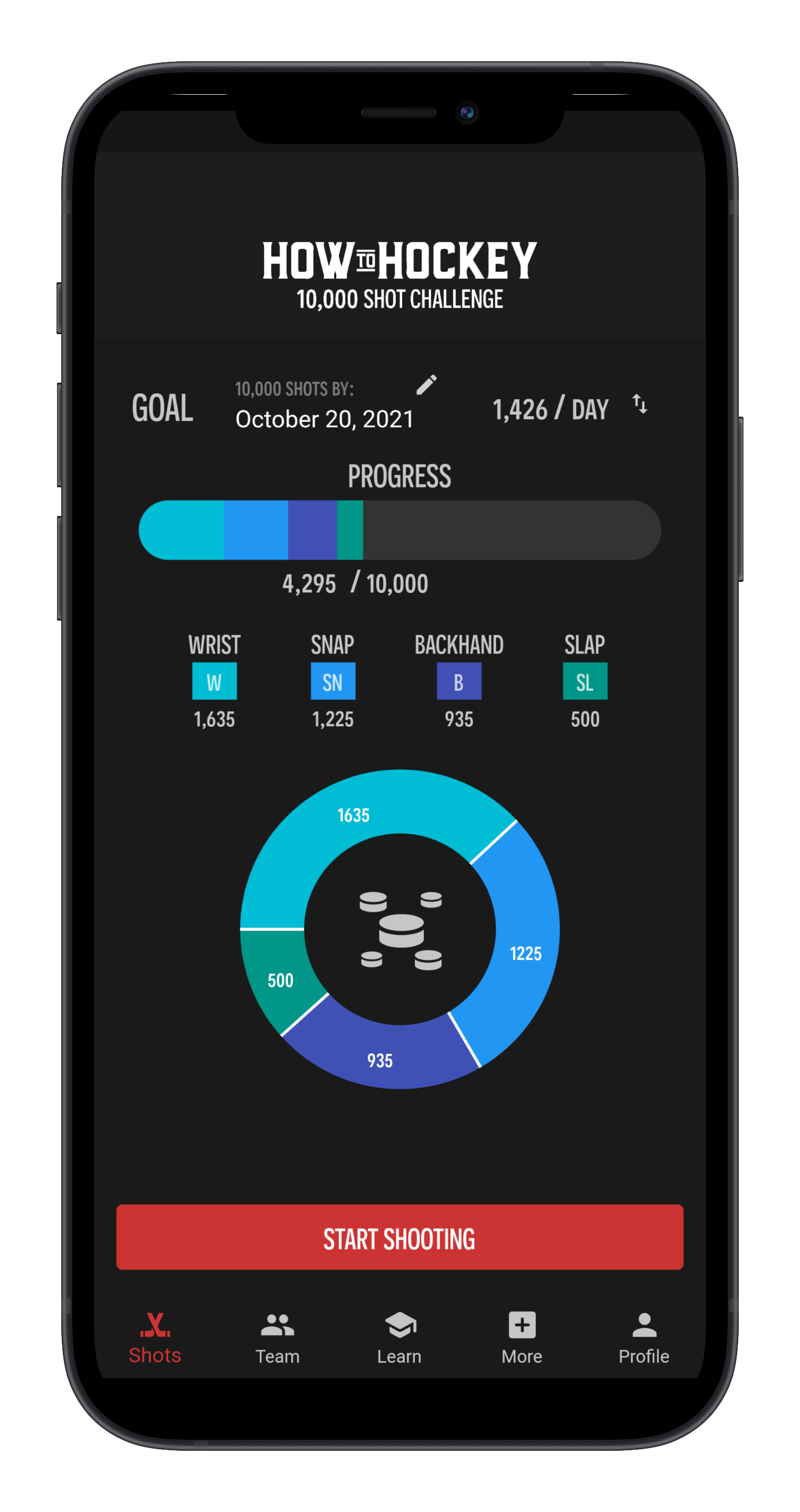Turning is one of the fundamental skills that every hockey player needs to learn. Sure you might be able to turn, but how well can you do it? There is a big difference in a slow gradual and off balance turn VS a quick, tight, sharp turn. In this video and article we are giving you the information you need to start performing better turns.
How to Turn in Hockey
The Basics of a good turn
For a good turn you want to use both skates. Sure you can still turn with only one skate on the ice, but with two blades on the ice you will be more balanced, and be able to turn at higher speeds. Below is a breakdown of the turn
- If you are turning left, lead with your left foot. If you are turning right, lead with your right foot
- With a staggered stance, most of the weight will be on the outside leg, and your inside skate will be there for extra balance and to help you get lower (and a tighter turn)
- With both feet on the ice you can use both edges, rather than just one
- When you are coming out of the turn, use a few crossovers to accelerate out and keep your speed.
- Throughout the turn you should maintain balance, you can do this by staying low, and having a good base (feet are not too close together)
NHL Examples
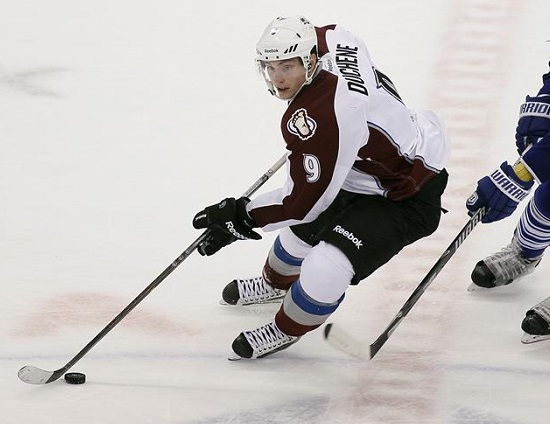
Matt Duchene is performing a nice tight turn, he has a good base and a staggered stance. This staggered stance helps Duchene get a better turn, but also protect the puck from the defender!
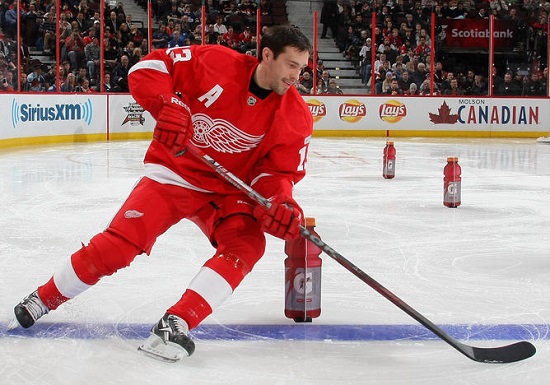
Here is Pavel Datsyuk in the NHL Skills Competition. Notice how the hands are away from the body, the stick leads Datsyuk through the turn, and he is nice and low with both blades on the ice. As Datsyuk completes this turn he can execute crossovers from this position and keep his speed.
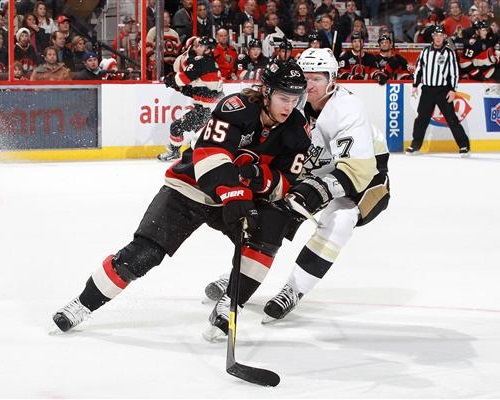 Here is a tight turn with the puck on the forehand. Notice the nice wide base for balance and strength (hard to knock off the puck). Karlsson has his hands away from his body so that he can cup the puck even more and perform a tighter turn. With his feet like this he can keep on pushing with the outside leg and drive wide while pushing on the opponent.
Here is a tight turn with the puck on the forehand. Notice the nice wide base for balance and strength (hard to knock off the puck). Karlsson has his hands away from his body so that he can cup the puck even more and perform a tighter turn. With his feet like this he can keep on pushing with the outside leg and drive wide while pushing on the opponent.
Tight Turn Tips for Hockey
Want more? Check out our Learn to Skate Series and don’t forget to subscribe to our blog (box to the left)
